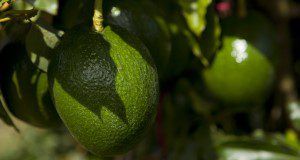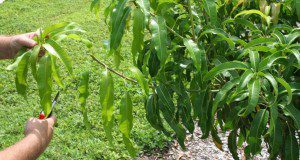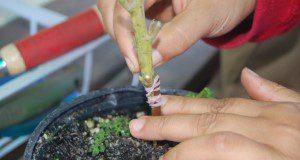Este documento provee un panorama básico de los factores más importantes al diseñar. Written by Haimanote K. Bayabil, Kati W. Migliaccio, Michael Dukes, Laura Vasquez, and Carlos Balerdi, and published by the UF/IFAS Department of Agricultural and Biological Engineering, December 2020.
https://edis.ifas.ufl.edu/ae549
Tag: Carlos Balerdi
Recomendaciones para la Detección y Mitigación de la Marchitez del Laurel en Árboles de Aguacates y Especies Relacionadas en Jardines y Patios Hogareños
This is the Spanish translation of HS1358, Recommendations for the Detection and Mitigation of Laurel Wilt Disease in Avocado and Related Tree Species in the Home Landscape. Avocado trees are a popular choice for homeowners in Florida, with over 600,000 growing in Florida home landscapes. However, avocado trees as well as others in the Lauraceae family are susceptible to laurel wilt disease, which can kill a tree in as few as three weeks. This new 8-page publication of the UF/IFAS Horticultural Sciences Department provides home owners recommendations for identifying and mitigating laurel wilt disease in the home landscape. Written by Jonathan H. Crane, Jeff Wasielewski, Daniel Carrillo, Romina Gazis, Bruce Schaffer, Fredy Ballen, and Edwards Evans.
https://edis.ifas.ufl.edu/hs1384
Hand Pruning and Training of Tropical and Subtropical Fruit Trees
This new 6-page document explains the proper way to prune fruit trees using hand tools. An important aspect of growing tropical and subtropical fruit trees is size control through pruning. In addition to size control, pruning also makes it easier to spray the tree and harvest fruit from the tree. Pruning also makes the tree more hardy to wind events and healthier in general because you can remove damaged or unhealthy parts of the tree. Written by Jeff Wasielewski, Jonathan Crane, and Carlos Balerdi, and published by the UF/IFAS Horticultural Sciences Department.
https://edis.ifas.ufl.edu/hs1372
Tropical and Subtropical Fruit Propagation
Propagation is an important technique used by tropical and subtropical fruit growers worldwide, allowing plants to be grown cheaply and efficiently. While sexual propagation (by seed) results in plants that are not genetically the same as the mother plant, asexual propagation (cuttings, division, air-layers, and grafting) creates offspring that are clones of the mother plant. Cloning fruit trees is important because it allows different cultivars to be preserved over time. This new 7-page publication of the UF/IFAS Horticultural Sciences Department explains both sexual and asexual propagation techniques, why they are used, and what type of propagation is best for which species of tropical fruit. Written by Jeff Wasielewski and Carlos Balerdi.
https://edis.ifas.ufl.edu/hs1349
La Grama St. Augustine para Patios de Florida
La grama o césped St. Augustine está muy adaptada a las zonas calurosas y húmedas (subtropicales) del mundo. Se cree que es nativa de las regiones costeras del Golfo de México y del Mediterráneo. St. Augustine es la especie de grama más usada en Florida. This is the Spanish-language version of ENH5/LH010, St. Augustinegrass for Florida Lawns. St. Augustinegrass is the most commonly-used lawn grass in Florida. This 10-page document describes its cultivation and management for Florida lawns. Written by L. E. Trenholm, J. B. Unruh, T. W. Shaddox, C. Balerdi, and H. Mayer and published by the UF/IFAS Department of Environmental Horticulture, January 2018.
http://edis.ifas.ufl.edu/ep552
HS1127/HS377 Cashew-Apple Fruit Growing in the Florida Home Landscape
HS-1127, an 11-page illustrated fact sheet by John McLaughlin, Carlos Balerdi and Jonathan Crane, describes this tropical fruit, suitable climate for optimum growth, propagation, production and spacing for the home landscape, soils, planting, care, and pruning, harvest, ripening, storage, and use and nutritional value of the cashew apple. Includes references. Published by the UF Department of Horticultural Sciences, April 2008.
http://edis.ifas.ufl.edu/HS377




